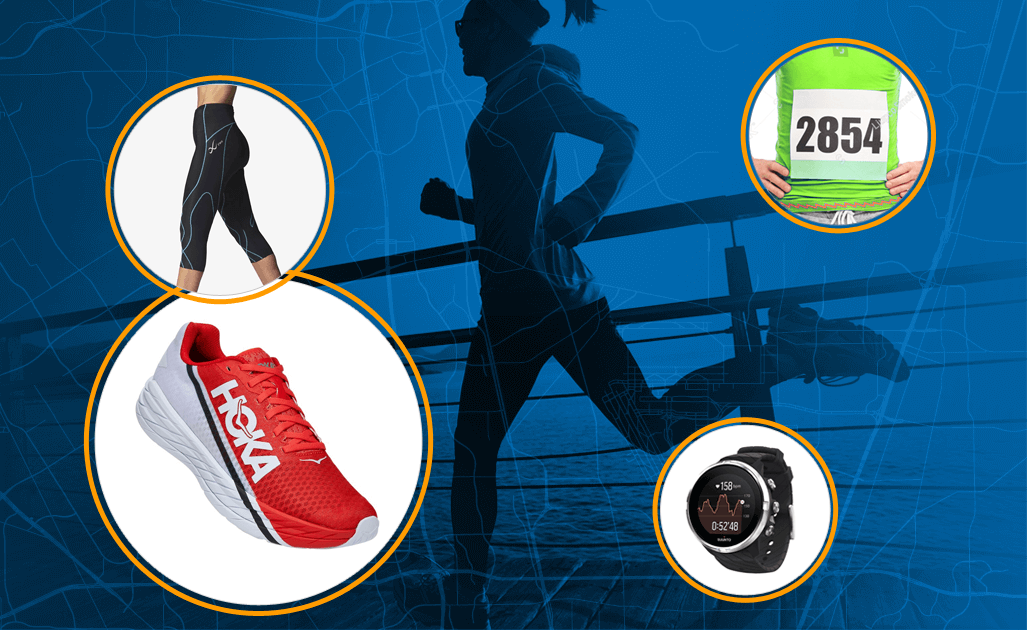
Ever try running at high altitude when you're not used to the elevation?
.
Eavesdrop on tourists at the top of Colorado's Pikes Peak at 14,000 feet above sea level, and you'll hear...
There’s something incredibly alluring about the vast and wild beauty of high altitude mountains—their harsh, stark, yet stunning summits.
.
For many runners, including those who live at sea level, high altitude adventures are a bucket list item.
.
So how do you train for running at high altitude for epic races like Pikes Peak Marathon & Ascent, Ultra Trail du Mont Blanc (UTMB), or Hardrock 100?
.
In this article you'll learn...
For the road runners reading this...
Regardless of your preferred running terrain, you’ve probably caught whispers of the benefits of altitude training.
.
But what is altitude training and how does it benefit runners?
.
Keep reading and find out!
.
In general, when an athlete is at altitude, the body’s oxygen transport systems are working double time.
.
Here's what happens...
There are two phases of adaptation to altitude...
About 24-72 hours after you arrive at altitude, the body tries to artificially boost red blood cell count through a process called haemoconcentration...
Some common symptoms you might feel during immediate adaptation to altitude are:
After 2-3 weeks at altitude, your body has produced shiny new, mature red blood cells.
But for the rest of us mere mortals who can’t afford to spend weeks immersed in the sport at high altitude, how can we find success above 4900 ft?
.
Here are the FOUR secrets to running at high altitude...
No, the first secret is not to buy an altitude tent…
.
Fitness is the number one predictor of success at altitude.
Having the right balance of volume and intensity for your goals isn’t the most exciting concept, but it can make or break your experience in the mountains.
If you’re wondering about how to create the best training plan for your goals and training availability, it could be a prime opportunity to hire a running coach that understands high altitude training and racing– especially if a high altitude event is your A-goal for the year.
There are two options if you are coming from around sea level and want to perform your best at altitude.
For athletes who have families, work full-time, and have busy schedules, making high altitude races week-long vacations might not always be the most practical.
On the other hand, if you can arrive at the race location at least one week in advance, this allows you to get over the acclimatization hump and feel your best on the big day!
Both of these strategies should come with the important disclaimer that runners will respond at different rates to altitude acclimatization.
💧Hydration
.
The combination of drier air, reduced thirst signaling and greater fluid loss via urine, and increased respiration at high elevations make for the perfect storm of dehydration.
A 2018 study on Israeli Air Force aviators’ fluid balance found that:
😋Nutrition
.
At elevations higher than 4,900 feet, the body makes some interesting changes when it comes to prioritizing oxygen delivery.
Similar to running in heat, the body starts to shunt blood away from the digestive tract and into the working extremities.
The best course of action–particularly in longer races where food intake is crucial, runners can implement the sip, sip, nibble strategy.
If you’re running an ultramarathon, it’s wise to test out an array of foods prior to your race.
Your race paces will feel more effortful at high altitude.
Try to adjust your expectations prior to the race and prepare yourself to race intelligently.
If you plan to run at altitude for a long period of time during a camp, it can be beneficial to use a heart rate monitor as a proxy for intensity.
Now that you have the four secrets to running at high altitude, let’s discuss some of the common myths surrounding these hypoxic locales.
There is less oxygen present in the atmosphere at high altitude.
✅Fact: The gasses at altitude remain the same as they are at sea level. There is the same amount of oxygen present at the top of Everest as there is in Miami, Florida.
Altitude masks or airflow restriction devices are a great way to prepare for high altitude goals.
✅Fact: There is no quality evidence to show that airflow restriction devices (ARDs) promote the desired adaptations that will improve performance at high altitude.
If you’re coming from sea level to high altitude, you’re guaranteed to get altitude sickness.
✅Fact: Individuals respond differently to high altitude. Your:
If you’re planning to spend an appreciable amount of time (weeks/months) at high altitude, it’s not a bad idea to:
I’m going to commit to altitude training. I should go as high as possible for as long as possible to get the benefits.
✅Fact: More is not always better in the case of high altitude.
The popular method of sleeping high and training low is designed to maximize the benefits while minimizing the negative effects of a hypoxic environment.
I’m planning to race a high altitude event, therefore, I MUST go train at altitude or use an altitude tent beforehand.
✅Fact: Altitude training at a camp or with an altitude tent is a matter of marginal gains.
It’s worth noting that runners who visit high altitude training camps are most likely benefiting more from the limited distractions and the sole focus on their training than they are from the altitude itself.
.
🔥If you’re interested in using heat training to prepare for a high altitude event, check out this article.
.
What mountainous adventures do you have on your bucket list? Let us know in the comments!

Login to your account to leave a comment.





We Want to Give it to You!
